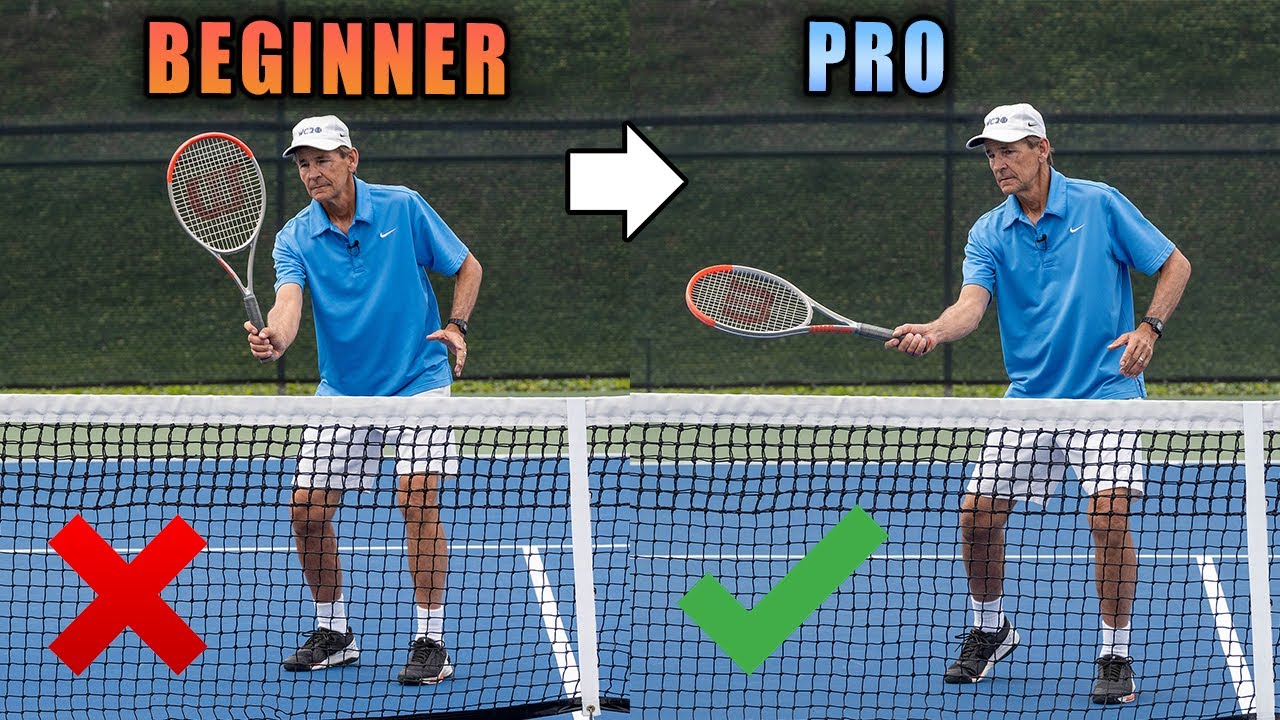How To TIME The Non Dominant Arm On The Serve | Tennis Serve Lesson
Summary
TLDRIn this engaging tennis lesson, John from Performance Plus Tennis focuses on the critical role of the non-dominant arm, particularly the tossing arm, in the serve. He clarifies common misconceptions about keeping the arm up, emphasizing the importance of raising the arm post ball release to achieve a strong, coiled position for power generation. John explains that professional players maintain a consistent angle between the torso and the tossing arm, which naturally leads to a 45-degree angle that loads the upper body for a powerful serve. He advises players to pay close attention to the timing and movement of the non-dominant arm, which should pull away as the ball begins its descent, triggering the swing and stabilizing the body during the serve. By mastering the timing and movement of the non-dominant arm, players can significantly improve their serve's power and control.
Takeaways
- 🎾 The non-dominant arm plays a crucial role in the serve, particularly in timing and power generation.
- 📈 After releasing the ball, high-performance servers continue to raise their non-dominant arm to achieve a vertical or beyond-vertical position for a strong coiled position.
- 🚫 Avoid letting the non-dominant arm just fade away after the ball is tossed; it should actively rise to contribute to power.
- 🤸♂️ The tossing arm should not simply stay up but must uncoil to trigger the body's rotation and serve motion.
- 🕒 The timing of the non-dominant arm's movement is critical for the serve's success, often pulling away as the ball begins its descent.
- 📏 The left arm's movement naturally maintains an angle with the torso, which helps load the upper body for the serve.
- 🏋️♀️ The left arm stretches up and back, loading the body into a strong position essential for a powerful serve.
- 🤲 The left hand's position at the lowest point of the racket drop is a common sight in professional players, indicating control and timing.
- 👀 Focus on the non-dominant arm's actions rather than just the swing to improve serve timing and coordination.
- 🧭 If experiencing serve timing issues, it's likely due to incorrect calibration of the non-dominant arm's movements.
- 📹 Suggests self-filming or having someone observe your serve to ensure proper execution of the non-dominant arm's role.
Q & A
What is the primary focus of today's tennis lesson?
-The primary focus of today's tennis lesson is the timing and the role of the non-dominant arm, particularly the tossing arm, during the serve.
What is the common mistake made by many recreational players regarding the non-dominant arm after releasing the ball?
-Many recreational players tend to let their non-dominant arm fade or fail to raise it high after releasing the ball, which is not the practice observed in high-performance servers.
What should a high-performance server do with their non-dominant arm once the ball is released?
-High-performance servers deliberately continue to raise their non-dominant arm up and get it at least vertical, and in some cases, even coil it back beyond vertical to generate power.
How does the position of the non-dominant arm affect the server's upper body during the serve?
-Once the non-dominant arm is raised vertically, the shoulders naturally follow the hand, creating a 45-degree angle that helps load up the upper body for a powerful serve.
Why is it crucial for the non-dominant arm to not stay up during the entire serve?
-The non-dominant arm should not stay up because it needs to uncoil and act as a catalyst for the body's rotation, which is essential for generating power in the serve.
What is the role of the non-dominant arm in timing the swing during the serve?
-The non-dominant arm plays a critical role in controlling the body during the serve and is also vital in the timing of the swing, as it moves away first, naturally triggering the swing to come to the ball.
When should a player pull their non-dominant arm away during the serve?
-A player should pull their non-dominant arm away as the ball begins its descent, which is typically when the racket drop gets to its lowest point.
What is the typical height of the ball toss for most professionals above the contact point?
-Most professionals toss the ball about 24 to 30 inches above the contact point.
How can mistiming the serve be related to the movement of the non-dominant arm?
-Mistiming the serve can often be due to miscalibration of the non-dominant arm's movement, such as pulling it away too early or too late, which can cause the player to swing early or hit the ball low.
What advice is given for players to improve their serve performance?
-Players are advised to focus on the role of their non-dominant arm, ensuring it gets into a strong vertical position after the ball is released, and then moves away at the right time to trigger the swing.
What is the recommendation for players regarding sharing the lesson video?
-The recommendation is to share the video with friends but not with opponents they are trying to beat, as the goal is not to improve their serve as well.
Outlines

此内容仅限付费用户访问。 请升级后访问。
立即升级Mindmap

此内容仅限付费用户访问。 请升级后访问。
立即升级Keywords

此内容仅限付费用户访问。 请升级后访问。
立即升级Highlights

此内容仅限付费用户访问。 请升级后访问。
立即升级Transcripts

此内容仅限付费用户访问。 请升级后访问。
立即升级浏览更多相关视频

Should You "Pause" During Your Serve Motion? | Tennis Serve Lesson

Professional Volley Technique Explained | Volley Tennis Lesson

PRO Forehand In 5 Simple Steps | Tennis Forehand Technique Lesson

Grigor Dimitrov Serve Analysis- Smooth, Powerful, And Precise!

How To Do The Backspin Serve - Tutorial

Carlos Alcaraz Serve Analysis- Powerful And Very Efficient!
5.0 / 5 (0 votes)
